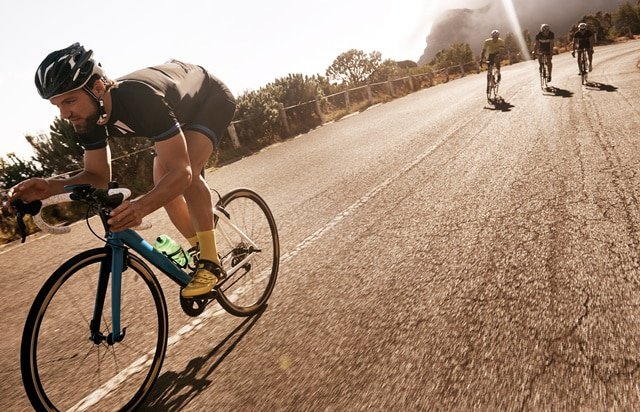How to Pig Out Responsibly After a Hard Ride
When you finish a hard ride and really drain the tank dry, your body is primed to turn everything you eat into recovery fuel. Here’s how and why to clean out the buffet. – By Selene Yeager

I’ll never forget rolling into Sunday dinner after my first 965-kilometre week on the bike. It was six days from Oswego, New York, to Palmerton, Pennsylvania, in the Pennsylvania Perimeter Ride Against Cancer – the most arduous charity ride I know of. You routinely clock 145- to 160-plus-kilometre days, each boasting very steep climbs. You obviously eat – and eat a lot – along the way, but it’s nearly impossible to stay on top of your kilojoule needs.
As I piled my dinner plate with sweet potatoes and venison steaks and sautéed veggies, and inhaled it all in roughly 35 seconds before reaching for another round, I looked up to see my dad’s jaw hanging toward the dinner table.
“Do you have any idea how far I rode this week?!” I replied to his incredulous gape. “I don’t question that you need it. I just don’t know where the heck you’re putting it,” he said, shaking his head. “Isn’t your stomach about to pop?”
“Nope. It’s going straight to my legs,” I said.
And I meant it. It’s one of the greatest feelings in endurance sports: When you actually drain the tank dry and feel true hunger, everything you eat tastes like a five-star meal seems to bypass your stomach and go directly to your burned-out cycling muscles and cerebellum. It’s a real thing and it should be properly celebrated, especially since many of us spend so much time otherwise (and appropriately) practicing moderation, so we’re fit enough to do rides that empty out the tank.
Even if you took in 50 grams of carbs an hour while you were hammering along out there, you still rack your bike on E. If you don’t eat while you’re out there, even a 90-minute to two-hour race-pace effort can drain the stores dry.
That’s where the good part comes in: restocking the stores. In the period immediately after you’ve finished a hard ride, there’s a “recovery window” where your insulin levels peak, opening multiple metabolic pathways to expedite your glycogen storage and muscle-repair process. You’re not only primed to transport the carbs you eat straight into your muscle stores, but also to shuttle amino acids into your muscles, where they can repair the damage and build you back stronger.
How to Stuff Yourself Like an Athlete
You want to take advantage of that window, which starts immediately and lasts about two hours (it’s shorter for women; longer for men because of hormone differences) by feeding your hungry muscles the carbs and protein they need to recover. Enter the well-earned post-leg-frying ride feast.
For monster rides or races, you’ll want about 3 to 4 grams of carbs for every kilogram of body weight along with about 25 to 30 grams of protein. All said and done, a 68kg rider could be looking at a meal over the 4000 kilojoule mark.
That sounds like a lot, but when you figure a large chicken burrito wrap with guac and beans and rice (3300 kilojoules) and a few chips (800 kilojoules) and a cold recovery beer (620 kilojoules) racks the kilojoule tally at about 4800, you’re already there.
For best results, get a little creative with your indulgences to pack them with a maximum nutritional punch. Mashed potatoes and sweet corn and sliced turkey with avocado on sourdough will deliver more essential vitamins and minerals than a mound of spaghetti, says US-based exercise physiologist and nutritionist Stacy Sims, PhD.
Other great indulgences Sims likes: A pulled-pork sandwich with a side of beans and greens; Indian chickpea and potato curries as well as bacon and potato frittata.
“Lots of athletes head to a fast-food joint post-ride or race, which is okay if you choose wisely,” she says. “But a full-on greasefest is not the best way to refuel because it slows digestion.”
Remember, nobody is advising that you stuff yourself silly after every ride – or ever, really. But hard races, big tours and other fully depleting efforts certainly earn you a place at the buffet table. Just be sure to walk away after you’ve restocked your stores: Eating until you feel stuffed is counterproductive, because that means you aren’t really digesting and metabolising any longer and will just feel overfull and sluggish. Save the trip back for when you’ve truly emptied out the tank again.
READ MORE ON: cycling nutrition featured

